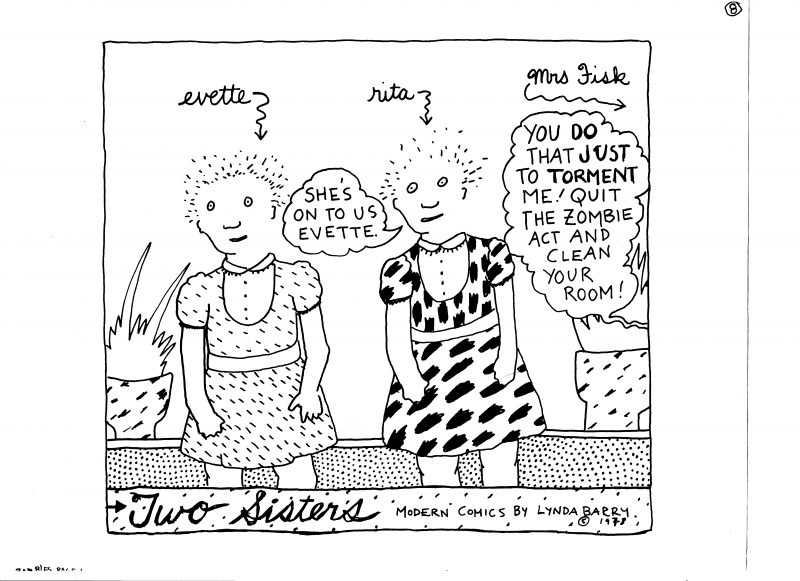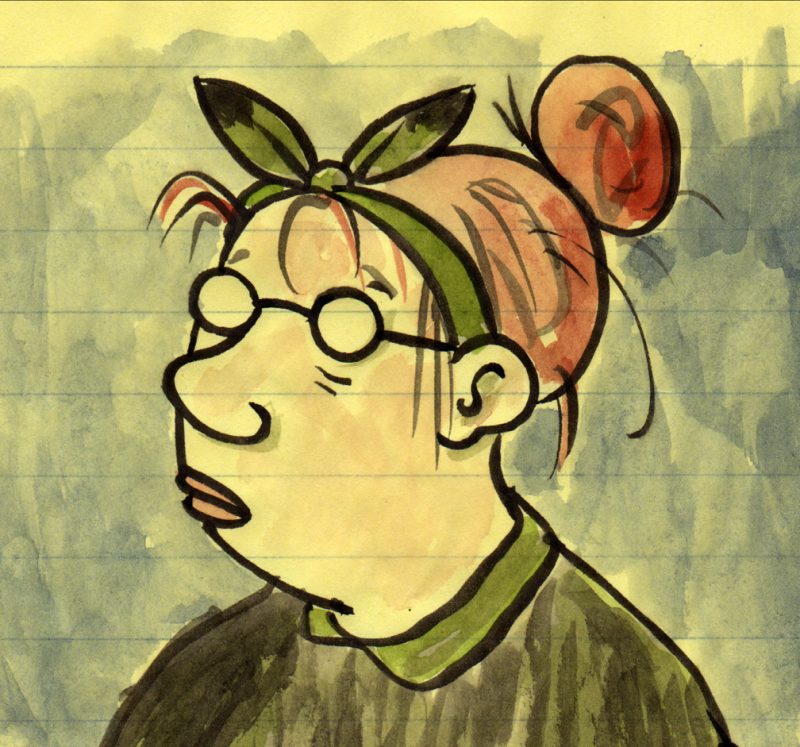One of America’s seriously multitalented artists, Lynda Barry is the author of sixteen books. These include Naked Ladies! Naked Ladies! Naked Ladies!: Coloring Book (1984), which offers black line-art of a deck of cards’ worth of women, with a narrative about Playboy and boners scrolling through its fifty-four pages; comics collections such as Girls and Boys (1981), Down the Street (1988), Come Over, Come Over (1990), and It’s So Magic (1994); and two novels: The Good Times Are Killing Me (1988), a story of interracial friendship that became a successful off-Broadway play, and the gory, darkly hilarious Cruddy (1999) (which the New York Times called “a work of terrible beauty”). The Greatest of Marlys!—a “best of” comics volume—appeared in 2000, featuring Barry’s most beloved character, a smart, spotty, bespectacled child. This was followed by the genre- and form-bending One Hundred Demons (2002)—an experimental autobiography in gorgeous color, which loops through Barry’s life in comics frames and meditates on themes in thickly layered collages made from everyday materials such as stamps, paper bags, and pieces of old pajamas. Barry’s latest taxonomy-defying work, What It Is—based on a writing course she teaches about memory and images, “Writing the Unthinkable”—appeared this year courtesy of the comics publisher Drawn & Quarterly, which is set to reissue five out-of-print titles from her backlist. This year, her nationally syndicated comic strip Ernie Pook’s Comeek celebrates its thirtieth year of existence.
Barry is the editor of The Best American Comics 2008, and she is working on two projects: a third novel, and The Nearsighted Monkey, a collaboration with her prairie-restorationist husband, Kevin Kawula. The two live on a farm in Wisconsin. (“We’re almost off the grid. We’re like hard-core hippies. We heat with wood and cook with wood and bake our own bread and grow our own food.”) The titular character is, she explains, an alter ego of herself: “She comes over and it’s like she’s the kind of guest who comes a day early. When you come home from work she’s wearing your clothes. She has no hesitation in drinking all your booze, but at the same time you kind of like her.”
I took Lynda’s “Writing the Unthinkable” workshop in the summer of 2007. Almost a year later, in early June 2008, I interviewed her over two weekend days in New York City. For the first—the morning after we’d both attended the Post Bang: Comics Ten Minutes After the Big Bang! symposium at NYU, where Lynda was the headliner—we met at Art Spiegelman...
You have reached your article limit
Sign up for a digital subscription and continue reading all new issues, plus our entire archives, for just $1.50/month.
Already a subscriber? Sign in





